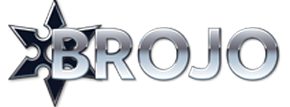Occasionally, I'm asked what it's like to be a coach.
I like to ask the question back...
What do you think I do?
And I get really interesting answers.
Some people imagine that I live in a world rich with juicy gossip and deep personal secrets.
Other people imagine that I'm rescuing clients from the brink of a bad decision... maybe an affair, or a divorce, even total self-destruction.
Still others imagine that I'm steeped in a mire of people who are struggling with the human experience... overwhelmed with self-doubt, self-pity, disappointment, frustration, disillusionment, and low self-esteem.
I've had all of these experiences many times, but they are not what defines the coaching experience.
The truth, for me, is that the experience of coaching is surprisingly well-structured. It's an almost predictable experience, and every session is based on one thing-
The current mental mode of my client.
I think of these as coaching modes, and there are three of them.
Crisis mode
About 80% of my clients first began coaching with a crisis.
Often it's a relationship crisis, or a career crisis. Once in awhile it's a health crisis or even an existential crisis... who am I and what am I here for?
A problem is when you fall out of a boat and ruin your leather jacket. A crisis is when you're in the middle of the ocean and you don't know how to swim.
Crisis modes are highly emotional, and very focused on overcoming a particular challenge situation. That challenge is clearly defined in the mind of the client as a story, but it's much deeper than that.
When a crisis occurs, it often revives the ghosts of other past crises too. Probably this isn't their first breakup, or their first time getting fired, so struggles extend beyond the current situation.
"Wtf? Am I just unlovable?"
The most defining characteristic of a crisis mode client is that the current situation is only half of the problem. The emotions they're feeling are just as difficult to contend with and they cannot be ignored.
Challenges;
- Learning to deal with your emotions
- Understanding what to do.
- Valued living in the face of a crisis.
- Clarity of thinking (stress / Cortisol inhibits this)
- Setting frame and dealing with confrontation.
- Getting perspective.
- Avoiding unhealthy coping mechanisms such as drugs & alcohol.
- Acceptance
Growth mode
Roughly 15% of my clients are in a Growth mode.
These are people who know what they want, and what limiting beliefs they want to overcome, to create a better life. They are focused on change, growth, and learning, and are investing heavily in building the life, social circles, relationships, career, mindset and confidence that they want.
Very often, my clients go directly from crisis mode to growth mode. It makes sense, because once the "problem" is gone and you can see what you want, all that's left is excitement, and figuring out how to pursue those exciting new dreams.
Challenges;
- Identifying your values
- Identifying limiting beliefs
- Identifying unhelpful thought patterns
- Making reflection and journaling central to your growth.
- Creating new habits, and engaging the discipline to make those habits replace the unhelpful ones
- Developing self-confidence
Maintenance mode
Finally, about 5% of my clients are in a Maintenance mode.
These are typically seasoned coaching veterans who have created the life they want, and are applying the skills they’ve learned to continue their growth. There are no urgent problems to deal with, and they are doing what needs to be done,
From a coaching perspective, this group is small because it's effectively the alumni group. They've finished school, They know what they need to know. They're just applying it.
Challenges;
- Keeping growth constant
- Avoiding slipping back into old thinking patterns, habits, and beliefs.
- Continually identifying new areas of growth and personal challenge that you wish to pursue, to create the best life possible
So what? Why does this matter?
Here are at least 3 essential takeaways you can apply to your own life.
All of us, whether we're coaching or not, are always in one of these 3 modes. All life long.
Me included.
Many of us feel shame in crisis state, and actively hide it.
When you look around you, it's not always entirely obvious who is having a crisis, who is actively pushing for growth and who is just happily maintaining a positive trajectory.
Sometimes you'll see it. Sometimes it's well disguised. People don't always want others to know the challenges their facing, so they cover them up, hide them, and even lie...
"I'm doing great, thanks."
If you feel the need to hide your struggles... you do you.
Just don't lie to yourself, and don't let it get out of control.
We can be in different modes in different areas of our life, at the same time
One of the simplest and most profound questions I reflect on is...
"Which mode am I in, in each area of my life?"
It shows me what I need to work on, but it also helps me get perspective. When a crisis happens you often feel like your whole life has fallen over- but that's rarely accurate. Some parts are probably awesome.
BROJO: Confidence. Clarity. Connection.
Join BROJO - the premier international self-development community - FREE!
- Connect with like-minded people who will support you with your goals and issues
- Overcome people-pleasing and Nice Guy Syndrome to build strong social confidence
- Get access to exclusive online courses to learn advanced social skills, how to master your psychology, proven career progression techniques and more
Addendum
-


Table of Contents
Addendum